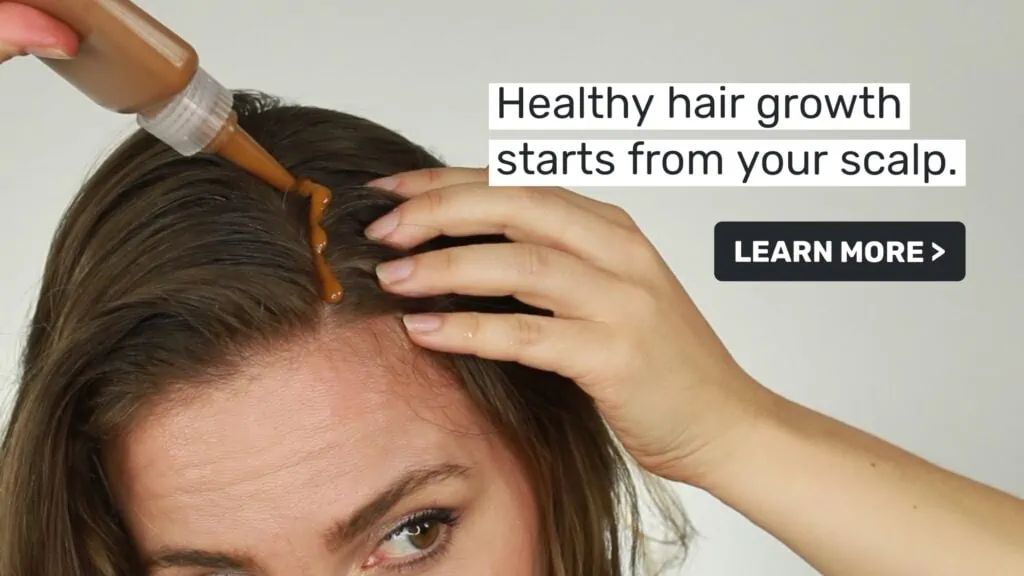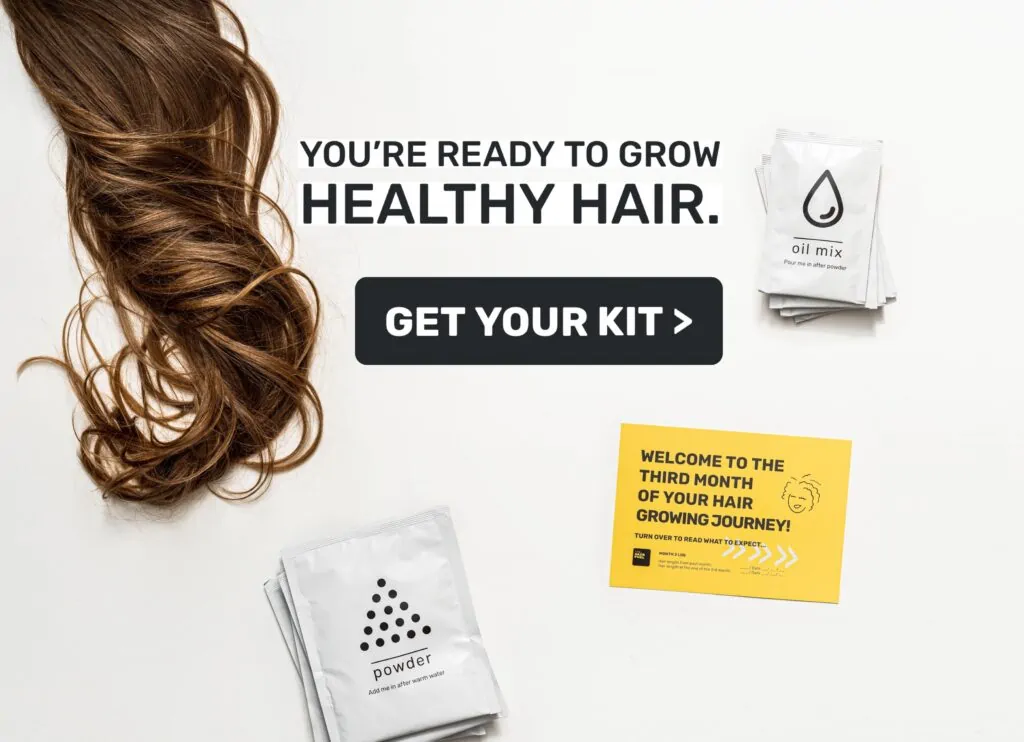Spring is in the air in the Northern Hemisphere and your follicles are waking up together with the Mother Nature. During autumn and winter months your hair growth slows down and more follicles are entering into the resting (telogen) stage, this is also preceded by what is known as “autumn shedding” or “late summer shedding”. But did you know that your follicles also experience spring shed, as well as spring growth spurt? This is part of your circannual rhythms to shed the “winter coat” – much like all the other mammals do – which results in spring shedding of hair. But our body also got accustomed to grow extra covering in spring, as well – to protect our bipedal ancestors against the midsummer sun. So if you notice increased hair fall in spring, you know why. And – you will also see a lot of small baby hairs around your vertex (crown) area of your head around the same time in spring, too. With these natural fluctuations in mind, is there anything you need to bear in mind to grow healthy hair and care for it in spring 2022? We updated and compiled our hair growth advice on how to look after your hair strands and hair roots in spring.
1. Scalp blood flow and spring hair growth spurt
Your hair follicles enter its peak growth stage around March and early April. In that growth stage, your follicles need all the nutrients they can get to grow healthy strands. This is why improving blood flow to scalp during this time becomes especially important: whether by scalp massages, dermarolling or scalp treatments, it will ensure your hair follicles receive enough fuel to grow healthy hair in line with the seasonal patterns of growth.
An additional way you can support spring hair growth spurt – is to supplement your diet with micronutrients and vitamins, so that your hair follicles receive maximum nutrients like magnesium and iron – essential for hair growth and scalp health, vitamin C for production of collagen that lines the inner sack of the hair follicle, full complex of B vitamins – necessary to convert the protein you consume into keratin – amongst many others.
2. Change your pillow(case)
Ahead of the sweaty summer days and as part of your spring clean, wash your pillow. Pillow accommodates bacteria, a study by Manchester university revealed that the average pillow contained around 1 million fungal spores. So wash your pillow – twice a year, your protective cover – every month, and your pillow case – every week. Replacing your pillow entirely could be a good idea if it’s covered in questionable stains and no longer holds its shape. A silk pillowcase reduces hair frizz and tangle as the hair glides smoothly across silky surface, the smooth surface also prevents your skin prematurely get wrinkles, too.

3. Hair-proof your pantry
We always say here at The Hair Fuel, that no matter what you put ON your scalp, healthy hair starts from within. With your life quickly regaining momentum post-covid, you might have less time to cook and perhaps more likely to reach for unhealthy snacks. So ensuring your pantry is healthy hair-friendly for quick balanced meals is key:
- linseed (also known as flaxseed) has anti-inflammatory properties due to amounts of omega 3 oils. This benefits your scalp health, as well as your nervous system. Linseed also contains lignans, compounds known to help rebalancing your hormones if you are suffering from androgenetic alopecia or polycystic ovaries syndrome (PCOS). Add a spoonful or two to yours salads, smoothies or soup as a topping!
- lentils and chickpeas contain easily digestible proteins that your body breaks into amino acids which your hair follicles need to grow healthy hair. They are easy to have canned so that you can add some protein to stews without taking hours to cook them.
- nutritional yeast – a source of vitamin B12, though to get your daily recommended amount you might need to add a few spoonfuls to your meal, they also add plenty of umami flavour to pasta (if you want to skip the cheese) and salads.
- nuts & seeds are packed with nutrients like vitamin E, B vitamins, zinc and essential fatty acids, all of which are required for healthy body functioning, including hair growth.
- sesame seeds require a praise on their own, one of the “underdog” of seeds, they contain 18g of protein per 100g, more than two-thirds of that of peanuts and the same amount of fat and 10 times less amount of sugar than peanuts!
- canned spinach – rich in iron, vitamin A and C – a vitamin essential for collagen production. Add a can of spinach to any stew or curry to add a hefty helping of iron. Make sure to add spinach last to preserve the vitamins and not accidentally destroy them by overheating it.
4. Do product audit
In the last 12 months you might have stockpiled a variety of products – maybe to try something new, following the latest TIkTok trend, or maybe you just needed a last minute hairspray for a party you were headed. Investigate your hair care shelf: are any products out of date? Once a product has been opened its shelf life usually lasts 6-24 months, known as “PAO” – period after opening, so be sure that you throw away products that have gone beyond that timeline.
As you throw old products away, replace them with product that don’t contain harsh sulfates and silicones to prevent your hair from drying and breaking. You might to spend an extra hour researching a new shampoo, conditioner or mousse – but your hair will thank you for that.
5. Do a blood check
When was the last time you really learnt what your hormone and vitamin levels are? To help your body through the change of seasons by correct supplementation effectively, doing a blood check is an easy way to identify your specific nutrient deficiencies. Especially important if you are observing a noticeable change in your hair: hair thinning, increased hair fall or brittleness may indicate a deficiency in certain nutrients but also be a sign of an underlying condition, such as underachieve thyroid or anaemia (when your body is short in iron). Other conditions that affect hair health which can be identified through a blood check – is polycystic ovarian syndrome (PCOS), whose side effects include androgenetic alopecia – or diffuse hair thinning. Schedule a health check and speak to a specialist about these concerns before it becomes a pressing and more urgent issue.
6. Get a trim or a pair of very sharp scissors
If you are an owner of longer hair, winter would have been especially harsh on your hair lengths. Woollen jumpers and hats rub on your hair and central heating takes all the moisture out of the indoor air. This leads to hair cuticles stand up and “bleed” the moisture they need – which causes breakage.
Take a good and critical look at your ends. Are they split but you don’t want to lose the length? Get a pair of dedicated scissors that you only use for cutting hair and perform a search & destroy treatment. Saves money and also can be quite meditative and therapeutic. Or does your hair style needs an upgrade? Book an appointment with your hairstylist and get a haircut that wouldn’t require daily upkeep and styling. If spring makes you crave a change and you are thinking to dye your hair, make sure the hair dyes don’t contain harmful ingredients that can hamper your hair growth.

7. Get a wide-brimmed hat
Seriously. As the world has opened up you are likely to pack your bags and go off to vacay somewhere warm and sunny, to your hair will need UV protection. Hair is susceptible to photo aging (aging induced by sunlight) which leads to dullness, brittleness and split ends. Invest in a hat that you enjoy wearing to protect your beautiful strands from the UV rays. (Bonus: a hat will protect the skin on your face from UV radiation, too.)
8. Wash your hair brush
Using your hair brush every day but not washing it often enough makes it accumulate dust and grease on its bristles. This can result in your hair becoming greasy sooner, also removing the lustre and shine – too. Give your hair brush a spring clean. Here is how:
- clear out any hair stuck in between the bristles
- clear out any dust stuck to the bristles – a toothpick here comes handy
- get a bowl of warm (not hot) soapy water and rinse your brush a few times
- change the water and repeat step #3 if necessary
- leave your hair brush upright to dry
9. Clean your hairdryer filter
The lockdowns might have meant that you used your hairdryer less, which is good news for your hair and we strongly recommend you keep blow-drying less. Yet, if you do use your hairdryer sometimes, a blocked filter can shorten the lifespan of your dryer, lead to over-heating and damage to the hair. Detach the filter from the appliance and wash it in warm soapy water or according to the manufacturer instructions – but make sure to let it dry completely before re-attaching it.
10. Create a hair ritual you can stick to
One of the powerful ways to ensure your hair grows through spring and beyond is to develop habits, or as we call them lovingly here – hair care rituals. Ritual is the moment you take for yourself and for your hair and give it attention and time it really deserves. We developed a hair care ritual framework that takes 42 days or 6 weeks, just in time for you to develop sustainable habits and set your hair growth in time for summer months ahead.
Sign up to The Ultimate Hair Health Calendar here >>>

Have you got any spring proofing tips for your hair? Share in comments!
Who we are:
The Hair Fuel is an all-natural hair growth mask created by Laura Sagen, who lost a third of her hair after a terrible visit to a hairdresser while suffering from a life-long condition of PCOS associated with androgenic hair thinning. She developed the formulation rooted in the science of scalp blood flow, which has become The Hair Fuel growth mask. Since then, her company has helped thousands of people like you to start growing healthy hair.
We work closely with our lab and manufacturers to ensure the highest quality product. But a product alone is never enough – so we hold your hand throughout your own, unique hair growth journey. Our flagship product, The Hair Fuel mask coupled with tailored advice, digital tools, and online support is there to help you grow the best hair you can. It’s a big claim – but we’re unafraid to make it. Check out our starter bundles >>
